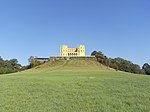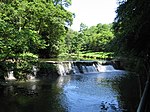Stoke Park Hospital
1909 establishments in EnglandBuildings and structures in South Gloucestershire DistrictDefunct hospitals in EnglandHospitals established in 1909Hospitals in Bristol ... and 1 more
Use British English from June 2013

Stoke Park Hospital, was a large hospital for the mental handicapped, closed circa 1997, situated on the north-east edge of Bristol, England, just within South Gloucestershire. Most patients were long-term residents, both adults and children of all ages. A school was on-site. Prior to 1950, it was known as the Stoke Park Colony, which was founded in 1909.The Burden Neurological Institute, opened in 1939, was co-located at the hospital, and outlasted the hospital on the site to 2000. The associated Burden Neurological Hospital was formed in 1969. The Institute later operated at Frenchay Hospital as a charity, and later as a research grant giving trust.
Excerpt from the Wikipedia article Stoke Park Hospital (License: CC BY-SA 3.0, Authors, Images).Stoke Park Hospital
Wren Close, Bristol Stoke Park
Geographical coordinates (GPS) Address Nearby Places Show on map
Geographical coordinates (GPS)
| Latitude | Longitude |
|---|---|
| N 51.495 ° | E -2.544 ° |
Address
Wren Close 5
BS16 1WB Bristol, Stoke Park
England, United Kingdom
Open on Google Maps










